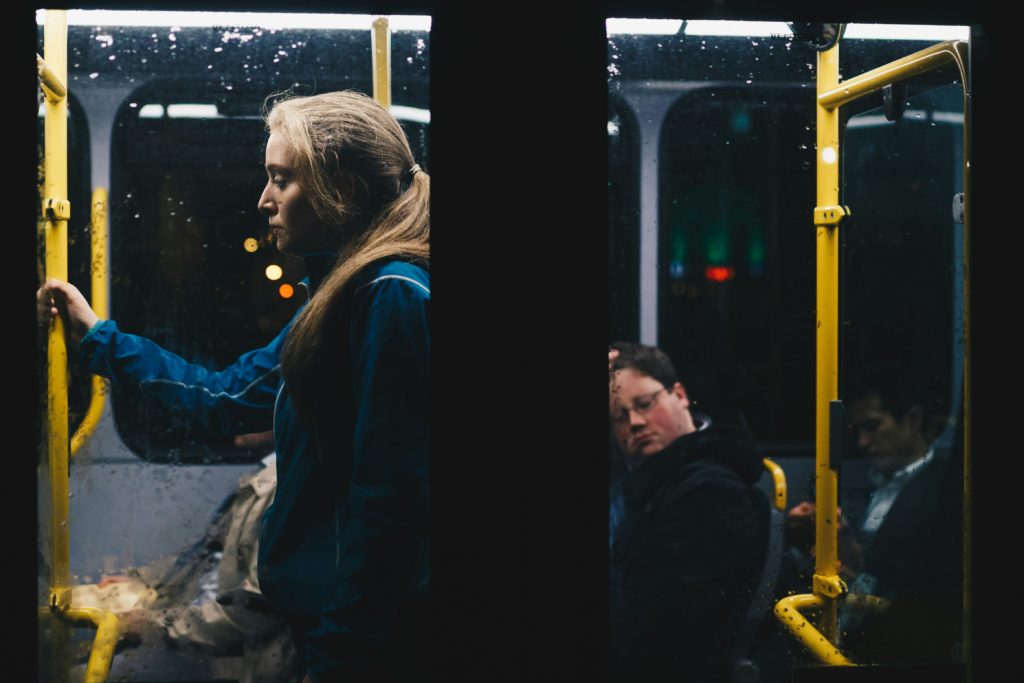
By Dr Sarah Brooks-Wilson
Department of Social Policy, Sociology and Criminology
American-Irish actor Saoirse Ronan has a greater platform than most and her short remarks on the Graham Norton show recently have sparked widespread discussions about personal safety strategies that women regularly use.
Although research evidence and crime data support the view that personal safety risks are gendered in nature, social deprivation makes risks much higher. Some of this has been resolved by service digitisation which has increased safe access from the comfort of home for people with computers and smartphones. Despite this, most people still need to make some sort of physical contact with key destinations like education, work, health care, shopping and leisure, making travel safety important to understand.
My current research project on young people’s safe access to services was conducted in the city of Birmingham where 51 per cent of people aged 15 or under live in the 10 per cent most deprived in England. Research established connections between deprivation, restricted safe travel choices and increased personal safety risks and this was gendered in nature. Young people had little choice about how they navigated the city, and few had access to a family car, despite most considering it the safest way of travelling around. Instead, most of the young people walked around their neighbourhoods and used buses for city-wide travel, despite most young people identifying walking and bus travel as the least safe.
Young people restricted their movements around the city to stay safe, with some rarely leaving home and others staying in at night. One young person had dropped out of college because it wasn’t safe to walk there, and others could not visit the city centre – a key employment area – due to the risk of exploitation.
Young people experienced criminal victimisation on buses and recounted multiple examples of intimidation, harassment, assault and robbery while travelling around the city. Gendered differences were apparent as girls repeatedly experienced unwanted sexual attention and attempted sexual assault, whereas boys experienced aggravated robbery and violent victimisation with the use of weapons. Lack of resourcing, lack of choice, limited formal support and not being taken seriously when reporting incidents meant that young people needed to develop their own safety strategies to limit the chance of criminal victimisation.
In particular, young people restricted their movements around the city to stay safe, with some rarely leaving home and others staying in at night. One young person had dropped out of college because it wasn’t safe to walk there, and others could not visit the city centre – a key employment area – due to the risk of exploitation.
To stop unwanted propositioning, one girl befriended unfamiliar people on buses who looked trustworthy and another used headphones so she could not hear. Girls used different strategies to unsuccessfully stop relentless attention from mainly adult males, including pointing to their school uniform, saying they were underage and saying that they were gay. Girls described moving seats and getting off buses to stay safe, and one girl could not talk about buses at all, because her experiences made it too upsetting.
Outcomes of these strategies included becoming socially isolated or misinterpreted as a gang member when travelling in groups for safety. Each young person has a variety of characteristics and circumstances that further influenced the level of risks that they faced. For example, personal safety risks were compounded by racist abuse, and poor concentration and decision making sometimes resulted in unsafe choices due to the nature of young people’s neurodiversity.
Theory suggests that travel is socially produced and socially productive, meaning that journeys reflect people’s living situations, as well as reinforcing them. Transport policy helps people living with disabilities, older people, rural dwellers and young people experiencing disabilities and although this support is warranted, young people experiencing social deprivation experience significant barriers and remain overlooked. Although some colleges provide bus passes, and other services provide ad-hoc discretionary help, a coherent, consistent, basic level of universal travel support is not available to help all young people complete the transition to independent travel in a safe way.
When making the transition to independent travel during adolescence, it is already necessary to decode transport systems, manage finances and access unfamiliar places alongside unfamiliar people. Serious personal safety risks present an additional layer of problems and my research shows that young people can decide to be late, absent or disengaged from important services that they need because they cannot get there safely. As such, it is vital that schools, colleges, workplaces and health care providers better understand the serious risks that young people face when they are not present and punctual, and respond accordingly. Reducing the issue to one of free bus passes (which are not universally available anyway) does not resolve young people’s lack of safe transport choices.
Whilst Saoirse Ronan raises an important point about women’s safety, the policy gap between transport and service provision needs closing because socially disadvantaged young people have been ricocheting within it, unnoticed and unsafe, for far too long.
Dr Sarah Brooks-Wilson is currently completing the Birmingham Youth Justice Safety Project which focuses on young people’s safe access to services. Also underway is the Bus Boarding Project, which is a collaboration with Solihull Independent Travel Team and will identify bus boarding barriers experienced by young people with hidden disabilities, with a view to developing some digital skills enhancement materials for the transport sector.
- Read more about Dr Sarah Brooks-Wilson
- Back to Social Sciences Birmingham
The views and opinions expressed in this article are those of the author and do not necessarily reflect the official policy or position of the University of Birmingham.
